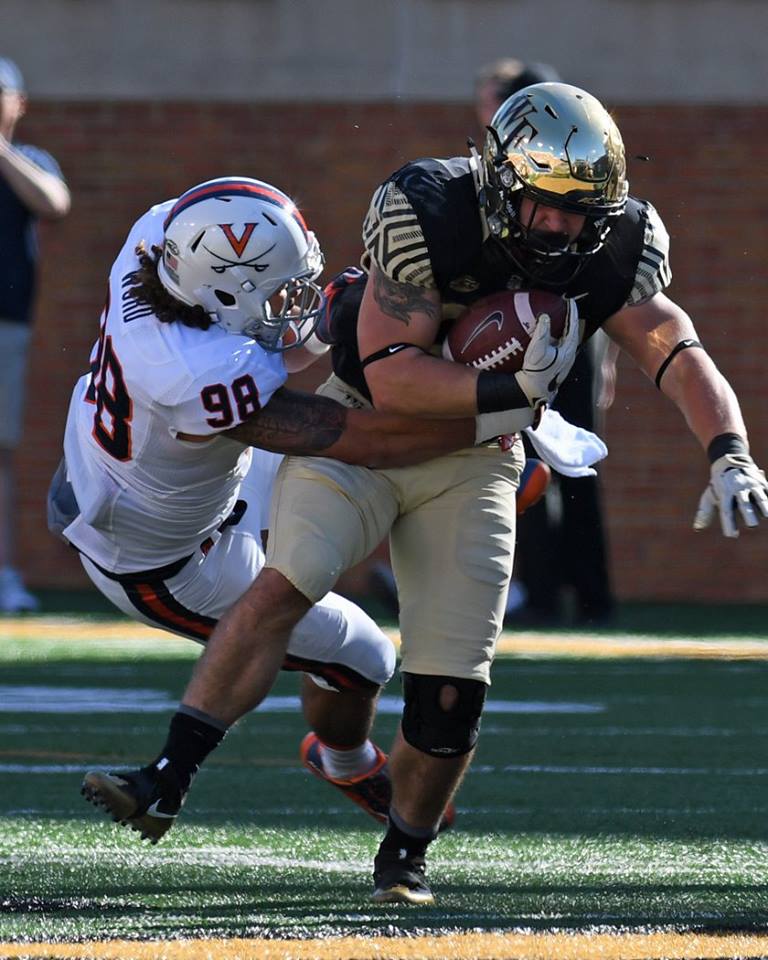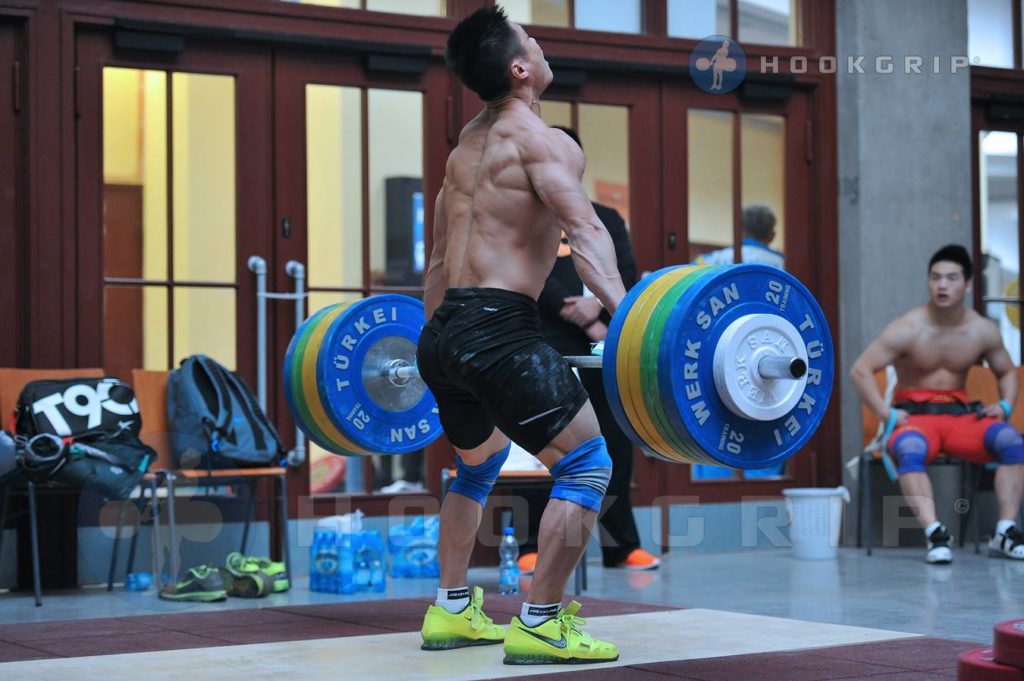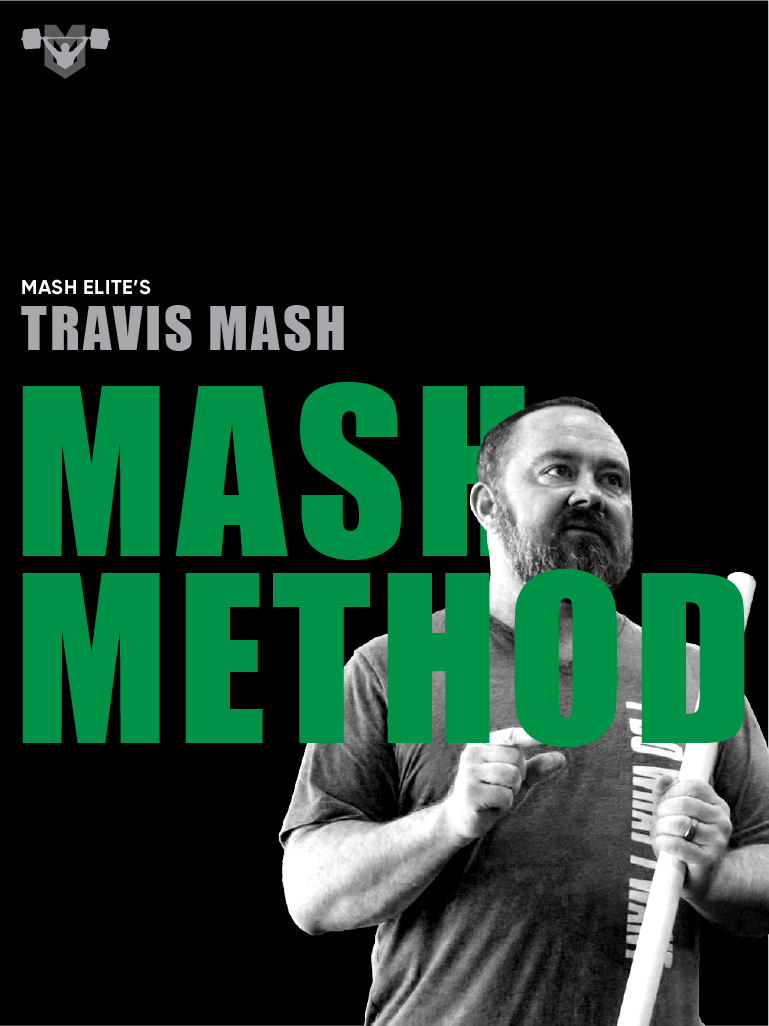My latest E-Book “Mash Method” is live and it’s FREE! Check it out now at: http://www.mashelite.com/mashmethod
===================================
Hypertrophy Year Round
Before we dive in, I want to clarify a few things about hypertrophy. Hypertrophy is the enlargement of tissue due to the increase in size of its cells. There use to be certain parameters around this training like: 3-4 sets of 8-12 reps or 45-60 seconds time under tension. Well that repetition range does cause hypertrophy, but so does almost all rep ranges. You can look at most powerlifters that perform 5 sets of 5 repetitions, and they are jacked as well.
However today we are mainly talking about the 8-12 repetition range. That repetition range still seems to be the most optimal range to elicit muscle growth. All of my athletes will go through these repetition ranges whether they are weightlifters, powerlifters, or field athletes.

A bigger muscle is a stronger and faster muscle. Hypertrophy is a very efficient way of making an athlete bigger, faster, and stronger. We have moments in the macrocycle that are totally focused on hypertrophy. Not only are there mesocycles dedicated to hypertrophy in our training, but also there are aspects of focused hypertrophy work throughout all of my athletes training.
What about the field athlete’s parent that says, “I don’t want my child to bulk up because it will make him slower?”
Number one that statement makes absolutely no sense. Did they ever watch Barry Sanders play football? He was jacked and back squatted north of 600 pounds. Have they ever watched a 100-meter sprint in the Olympics? Those guys are jacked, and they are the fastest men and women on planet earth.
Here’s a statement that I am most confident to make: “You can add as much muscle as you want. As long as the athlete remains mobile and their relative strength remains the same or improves, that athlete just got faster and stronger.” The moral of the story is get jacked as you want, but make sure to stay mobile and lean.
Most young athletes don’t have the ability to add massive amounts of muscle in the first place. By all means they need to add muscle. It’s always amazed me at the parents that made such irrational comments to me. Normally their child was 130 pounds soaking wet, and they were worried about them bulking up and getting slow. Kids like that need to do everything in their power to add some muscle just to have a chance to compete. So many times my heart is broken for young kids because I know that their parents will always be the roadblocks to their success.
Ok my rant is over, but I had to educate any of you up and coming athletic performance coaches. I also want to educate any athletes or parents that might be reading this as well. I want to leave you with this bit of information. I have been coaching athletes for over twenty years. I have worked with hundreds of D1 athletes, several professional athletes, three Olympians, and several Team USA weightlifters and powerlifters. Here is what I have found. The fastest athletes that I have ever worked with where the most muscular, had the best relative strength, and all of them were strong. Maybe this isn’t a published scientific study, but it is a pretty massive case study with real life athletes.
At Mash Elite we use dedicated hypertrophy work in three ways:
1. Non-Specific Hypertrophy- this is called our accumulation phase. This microcycle lasts anywhere from 2-4 total weeks. Normally this mesocycle takes place right after a meet and as far from the next big meet as possible. This phase is designed to give the joints a break, add some quality muscle, and to strengthen the body in areas that aren’t normally focused on. Here are a few of the characteristics:
• Unilateral work- most of my athletes focus on movements like squats, deadlifts, cleans and snatches. This is a good time to correct asymmetries with some unilateral lunges and presses.
• Repetition ranges between 3-12
• Sets between 3-10
• Lower reps are paired with higher sets and vice versa
• Very little if any competition lifts
2. Specific Hypertrophy- This phase comes right after the non-specific phases. This microcycle lasts anywhere from 4-6 total weeks. The focus is shifted back to the bigger multi-joint movements like squats and pulls. This is the phase designed to gain the most muscle hypertrophy. During this phase an athlete can expect big movements like back squats, presses, and pulls for lots of repetitions. We are chasing the pump for lack of better words. Here are a few of the characteristics:
• A focus on major compound movements like squats, deadlifts, rows, and presses.
• Repetition ranges between 3-12 with a focus between 8-12.
• Sets between 3-10
• 3-4 sets between 8-12 repetitions is the focus.
• Competition lifts are added back in with mainly complexes, eccentric loading, and a higher volume. The goal is to strengthen positions during this phase.
3. No Weaknesses Hypertrophy– this is where we focus on muscular imbalances with accessory work. This form of hypertrophy work is performed year round. We are normally targeting smaller muscle groups, so this type of training more easily recovered from. One of the biggest mistakes that people can make is eliminating accessory work the closer they get to the meet.
Two groups have proven to me that accessory work should be a focus at all times. Westside Barbell has preached this since I started in the sport of powerlifting. If performing dips or reverse hyperextensions were making an athlete stronger and better, why would you drop those exercises right before competing? We might drop the volume a bit to allow for super compensation, but we don’t drop accessory work.
The Chinese were the other group to prove the importance of accessory work. They are dominant in the sport of weightlifting right now. They appear to have no weaknesses. I had the chance to watch them firsthand in the training hall at Junior Worlds in Tbilisi, Georgia. They performed their snatches, clean & jerks, and squats, and then they crushed the accessory work. It looked like Arnold and Franco in the pump room at the Olympia in “Pumping Iron”.
Here are some of the characteristics:
• Single joint exercises like dips, pull-ups, plate lateral raises, reverse hyperextensions, etc.
• Bodyweight movements like lunges, handstand walks, and push-ups
• Carries for core stabilization (easy to recover from because to eccentric contractions)
• Sled pushes and pulls (easy to recover from because to eccentric contractions)
• 3-5 sets of 8-12 repetitions for concentric/eccentric exercises
• 3-4 sets of 30-60 seconds on the carries, pulls, and pushes
We focus on hypertrophy at Mash Elite. It seems like an obvious aspect of any strength program, but a lot of people neglect this area to their detriment. All of you watch Nathan Damron go through personal records like a knife through butter following his hypertrophy phases. It is Nathan’s focus on hypertrophy that has made him into the monster that he is along with his great genetics of course.
Next month we have two new books coming out that will go into detail about the Mash Hypertrophy Phases. One will detail Nathan’s “Train Stupid” program, and the other will take you much deeper into our hypertrophy programs. I am pumped for both of these.
In the meantime you can enjoy the latest e-book “The Mash Method” for FREE. This will also ensure that you are alerted to any of our book releases in the future. Here is some more information on “The Mash Method”:
My latest E-Book “Mash Method” is live and it’s FREE! Check it out now at: http://www.mashelite.com/mashmethod
===================================
This book has several of the techniques that I used to set personal records and world records along with some of my latest techniques that I’m using to get my athletes and me hitting all-time numbers.
-wave training
-bands and chains contrasted with straight weight
-walk outs
-partials contrasted with full ROM
-Squats for vertical leap -Sled drags to set PR 40 yd dash times
And more!


Good read!